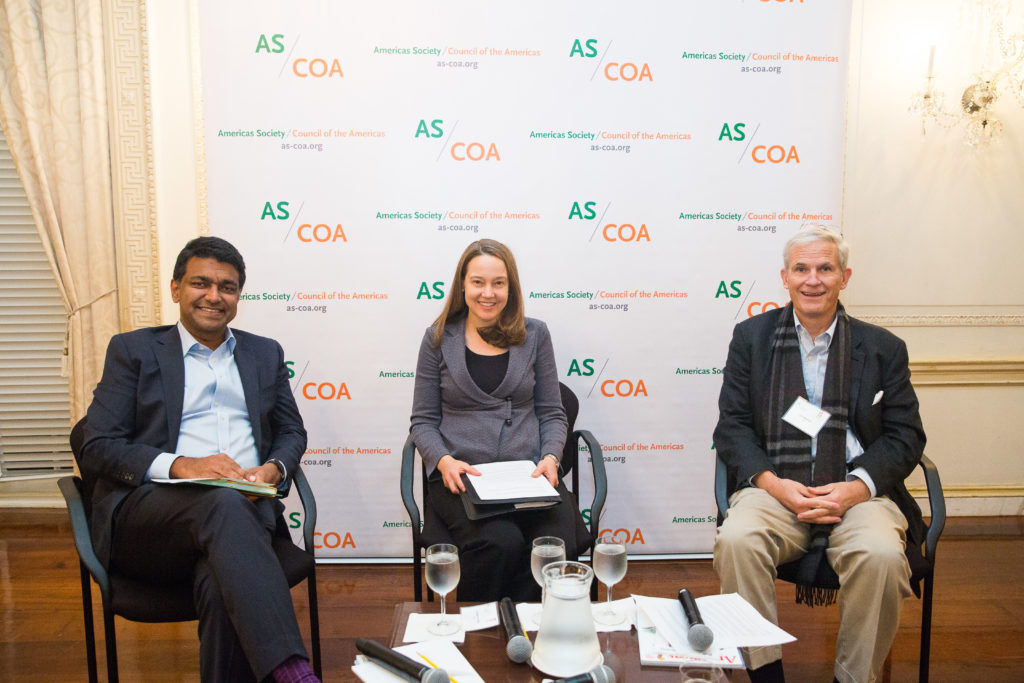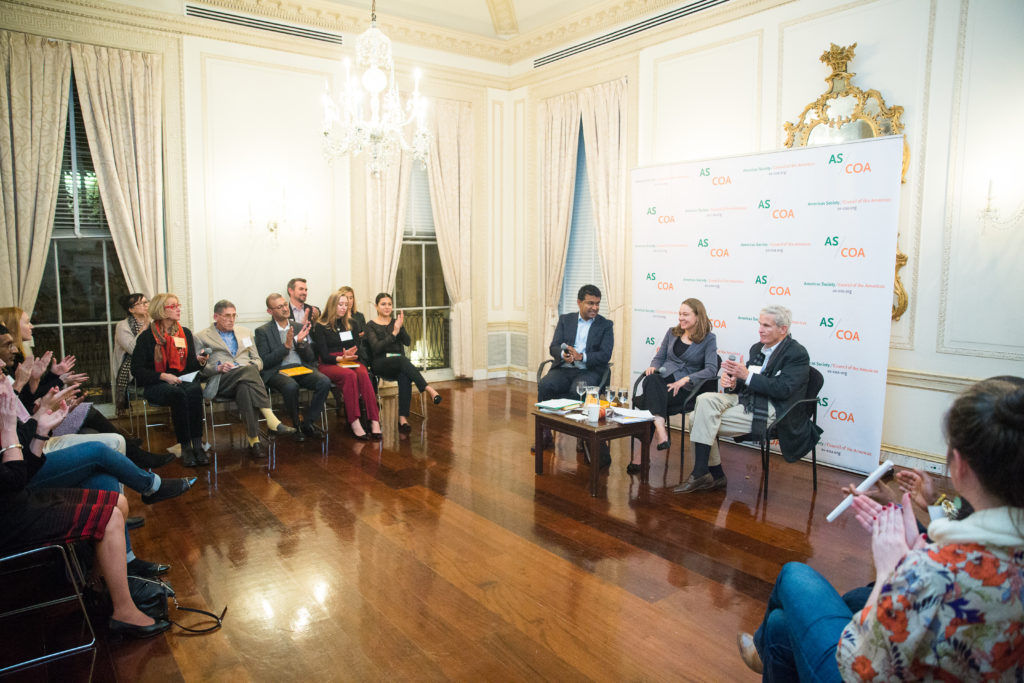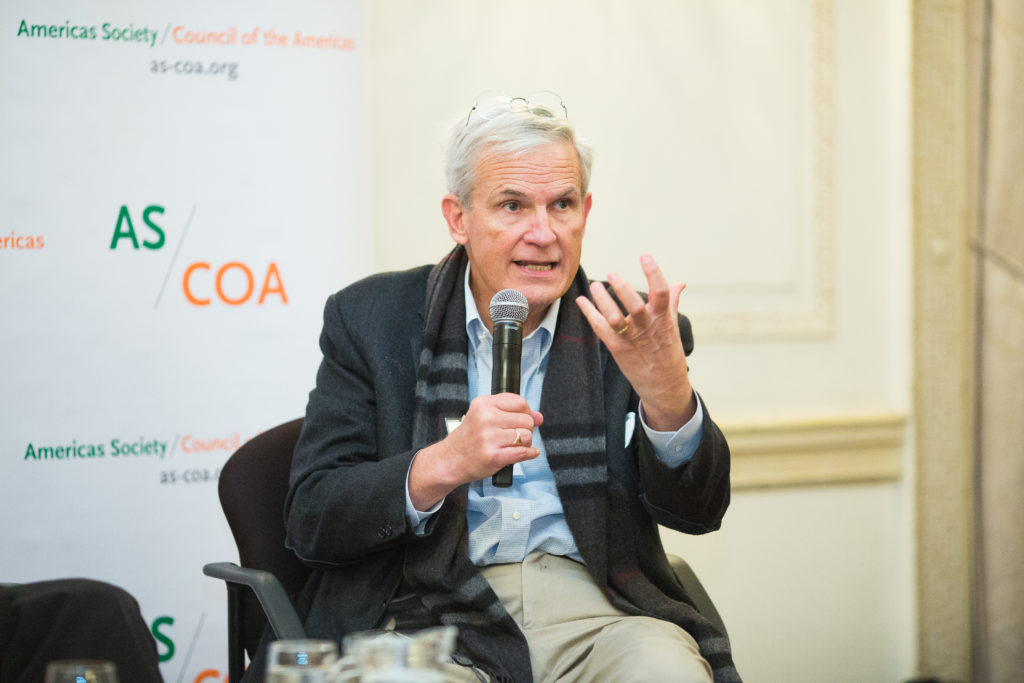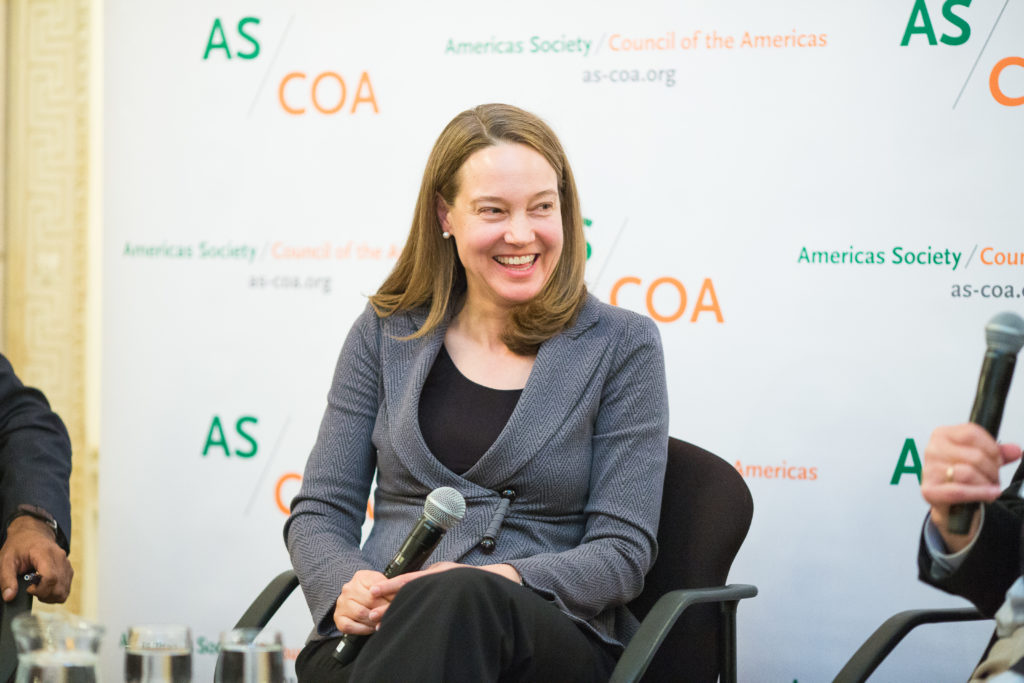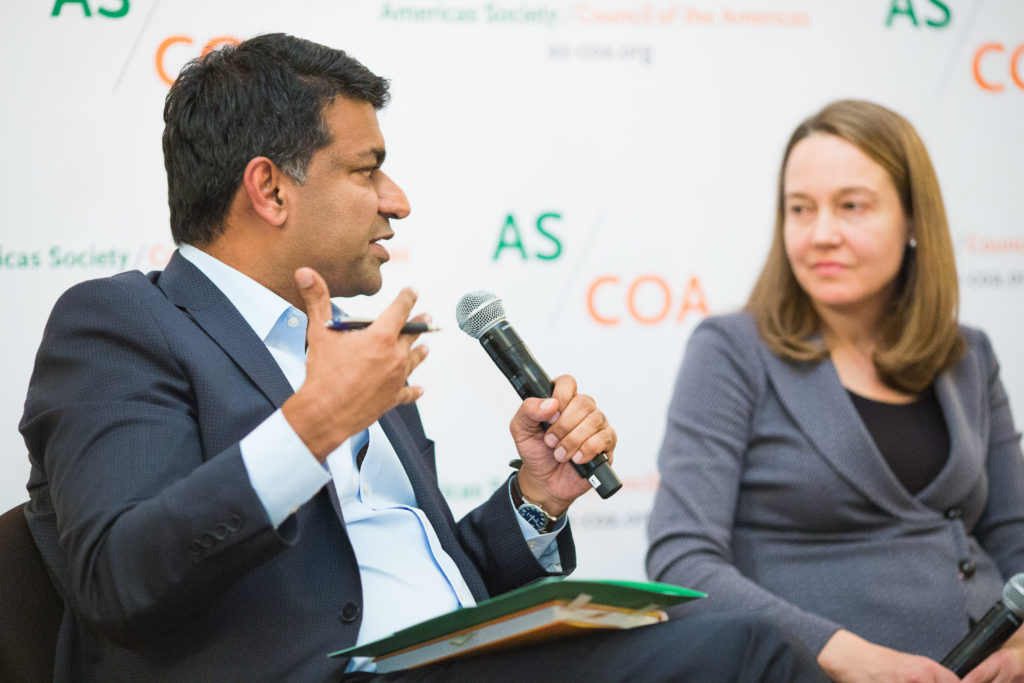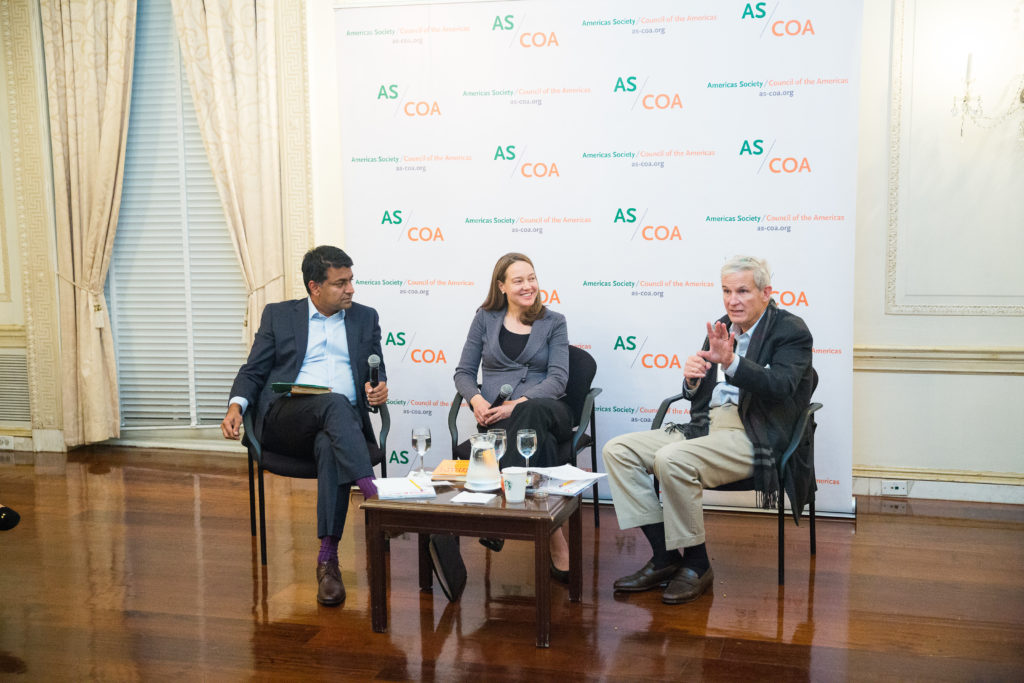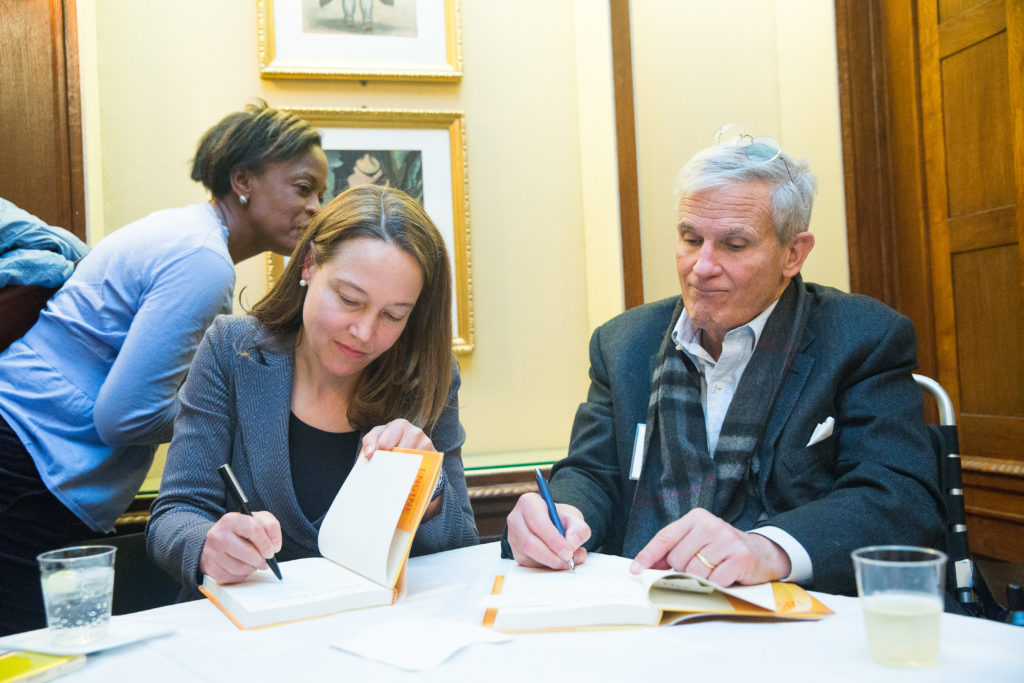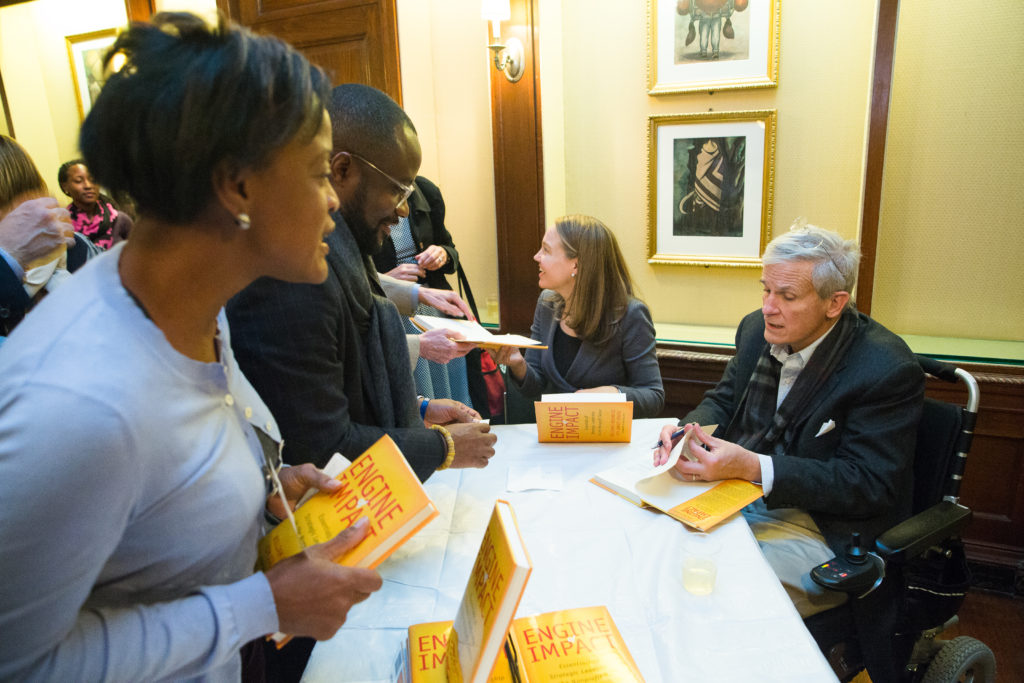News
A Review at PhilanTopic (Foundation Center)
Kyoko Uchida, features editor of Philanthropy News Digest (PND), a service provided by Foundation Center, has posted a thoughtful and comprehensive review of Engine of Impact at PhilanTopic, the PND blog. Uchida provides an extensive tour of key points from the book on topics such as mission, strategy, and board governance. ![]() She homes in on the central role that impact evaluation plays in Meehan and Starkey Jonker’s model of strategic leadership:
She homes in on the central role that impact evaluation plays in Meehan and Starkey Jonker’s model of strategic leadership:
Meehan and Jonker believe that only nonprofits that can demonstrate, through quantifiable measurement, their impact and capacity to maximize it, should—and will—thrive in the Impact Era. What’s more, their sense of urgency is palpable throughout the book. While none of the concepts they present are revolutionary, they have been reinvigorated and realigned for this moment. Which makes Engine of Impact an energizing, if sobering, read for nonprofit leaders, board members, and funders alike.
The full review is available here.
Big Apple Book Launch (Photos)
In conjunction with the official publication of Engine of Impact on Nov. 14, Bill Meehan and Kim Starkey traveled to New York City for a series of interviews and events. One event, hosted by the New York chapter of the Stanford Alumni Association, took place on Nov. 16 at Upper East Side home of the Americas Society/Council of the Americas. Zia Khan, vice president of initiatives and strategy at the Rockefeller Foundation, moderated the event. After Khan’s interview with Meehan and Starkey Jonker, the authors answered audience questions and then signed copies of the book.
Here, courtesy of the event organizers, are photos from the event.
“Your Engine of Impact”—a GuideStar Blog Series
In advance of the publication of Engine of Impact, and in conjunction with release of the Stanford Survey on Leadership and Management in the Nonprofit Sector, GuideStar launched what will ultimately be an eight-part series of posts by Bill Meehan and Kim Jonker.  The series, called “Your Engine of Impact,” will cover each of the seven elements that make up their model of strategic leadership, and it will conclude with a post on the role that strategic leadership plays in organizational scaling and in scaling impact.
The series, called “Your Engine of Impact,” will cover each of the seven elements that make up their model of strategic leadership, and it will conclude with a post on the role that strategic leadership plays in organizational scaling and in scaling impact.
Jacob Harold, president and CEO of GuideStar, wrote a special introductory post for the series. In his post, Harold also cites GuideStar-relevant findings from the Stanford Survey. And he makes a nod toward Meehan’s long history of supporting GuideStar and its mission:
Bill’s involvement in GuideStar runs deep. He was an early supporter of efforts by GuideStar founder Arthur “Buzz” Schmidt to leverage technology in a way that would empower donors to evaluate nonprofits. Bill also served on the GuideStar board from 1996 to 2012, and he holds the title of chair emeritus. Engine of Impact is, among other things, a culmination of Bill’s longstanding drive to bring greater rigor to nonprofit leadership.
Here are posts in the series that have appeared so far. (We will update the list as new posts go up at the GuideStar Blog.)
- Survey Says: Nonprofits Have Room to Grow (introduction by Jacob Harold)
- Your Engine of Impact: Mission
- Your Engine of Impact: Strategy
- Your Engine of Impact: Impact Evaluation
- Your Engine of Impact: Insight and Courage
- Your Engine of Impact: Organization and Talent
- Your Engine of Impact: Funding
- Your Engine of Impact: Board Governance
- Your Engine of Impact: Scaling
A Review by Beth Kanter
Thanks to Mario Marino and Leap of Reason Ambassadors Community, the nonprofit sector thought leader Beth Kanter received a copy of Engine of Impact. And she decided to review it on her blog. Kanter, author of widely read social sector books such as The Networked Nonprofit and Happy, Healthy Nonprofit: Strategies for Impact Without Burnout, calls the book “a great read, packed with insights as well as high level frameworks and practical applications” and suggests that it “should be on the holiday reading list” for nonprofit executives, board members, and donors.
Kanter draws attention to the special matrix that Bill Meehan and Kim Starkey Jonker present in Chapter 8 of their book. “I love frameworks, but sometimes they are dry and boring. Not in this book,” Kanter writs. “The authors have created a ‘Readiness to Scale Matrix’ which includes five categories, presented with engaging visual metaphors to make it memorable.” (That matrix also provides a framework for Meehan and Starkey Jonker’s Engine of Impact Diagnostic.)
Read the entire post on Beth’s Blog.
A Review by Lucy Bernholz
A good book review tells you whether a book is worth reading. A great book review illuminates why a book was (or was not) worth writing in the first place. Lucy Bernholz, a senior research scholar at the Stanford Center on Philanthropy and Civil Society and author of the annual Blueprint series on “Philanthropy and the Social Economy,” has posted a piece on Engine of Impact at her Philanthropy 2173 blog that clearly falls into the latter category.
In the review, Bernholz notes that Bill Meehan and Kim Starkey Jonker move beyond an all-too-common approach to describing the role of the nonprofit sector:
The idea that the social sector can both improve itself and, in so doing, improve and challenge, cajole and nudge other types of enterprises to greater action sets this book apart. Meehan and Jonker aren’t providing the nonprofit sector with “lessons learned from commerce” because business knows best, but quite the opposite. There are plenty of lessons for nonprofits from business, but the social sector’s opportunity (obligation?) is to act in such a way that businesses can follow. . . . [T]hey (nonprofits) are the engine of a society that can collectively address its greatest challenges.
Viewed in this light, Bernholz observes, the nonprofit sector is an “engine of impact” unto itself.
The McKinsey Origins of Engine of Impact
Bill Meehan and Kim Starkey Jonker have close connections to Stanford Graduate School of Business and the Stanford Center on Philanthropy and Civil Society, and much of the thinking in Engine of Impact originated on the Stanford University campus. But they also trace the roots of their book project to another institution: McKinsey & Company. Meehan was director emeritus at McKinsey, where he worked from 1978 to 2008. Starkey Jonker served as an associate and business analyst at the firm for several years between 1996 and 2003. In an interview posted at the firm’s Alumni Center website, the authors discuss their decision to collaborate on a study of nonprofit leadership, the ways in which their careers at McKinsey informed their perspective on the nonprofit sector, and other aspects of their experiences at the firm.

In the interview, Meehan notes the relevance of the book to the McKinsey community: “I think the book is truly a handbook for not only strategy, but things like the importance of fundraising and board governance and impact measurement for nonprofit executives, but we think the larger audience is people like McKinsey colleagues who serve on nonprofit boards and are philanthropists. The book is written very much with them in mind.”
You can read the full interview here. (For more insight on the people and ideas that influenced Engine of Impact, see the Preface to the book.)
A Systems-Level Look at the Social Sector
The target audience of Engine of Impact includes executives and staff members at frontline nonprofit organizations whose work has the potential to yield tangible, measurable results. The chief goal of Bill Meehan and Kim Jonker in writing the book, in other words, was to inform and inspire those who are in a position to build, tune, and fuel a true “engine of impact.” Yet the authors acknowledge that nonprofits make up just one part of a system that in various ways fails to support the practice of strategic leadership.
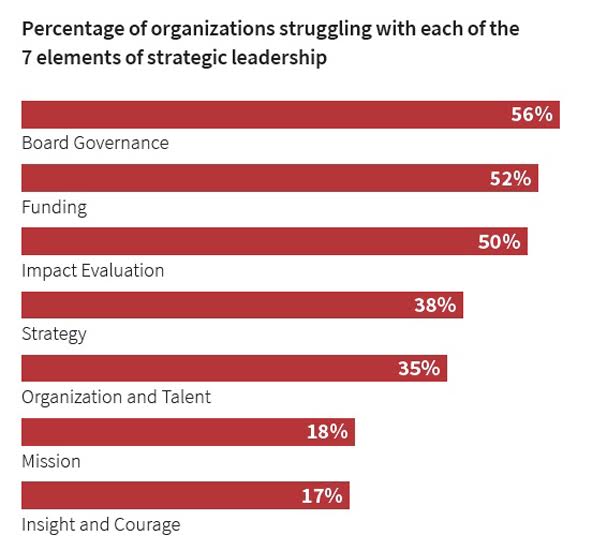 In an article for Stanford Social Innovation Review, Meehan and Jonker flesh out this critical point by describing steps that systems-level actors can take to enable nonprofit organizations to maximize their performance. The piece focuses on three of the seven components of strategic leadership—components that, according to findings from the Stanford Survey of Leadership and Management in the Nonprofit Sector, are most likely to pose a challenge for nonprofits. (See the chart above, which appears in the report on this survey.) Meehan and Jonker write:
In an article for Stanford Social Innovation Review, Meehan and Jonker flesh out this critical point by describing steps that systems-level actors can take to enable nonprofit organizations to maximize their performance. The piece focuses on three of the seven components of strategic leadership—components that, according to findings from the Stanford Survey of Leadership and Management in the Nonprofit Sector, are most likely to pose a challenge for nonprofits. (See the chart above, which appears in the report on this survey.) Meehan and Jonker write:
[W]hile individual nonprofits have work to do, they alone can’t accomplish the sector-wide transformation that is so necessary. Much of the work of building more effective organizations needs to start, in particular, with the board members who oversee nonprofits and with the donors who sustain them financially. Consider the three areas of performance [board governance, funding, impact evaluation] in which nonprofits are most likely to struggle. In each, influential players within the nonprofit sector can and must help nonprofits develop strategic leadership capabilities.
The article, “Filling Essential Gaps in Nonprofit Leadership,” is available here.
Insights on Impact—a Stanford Business Interview
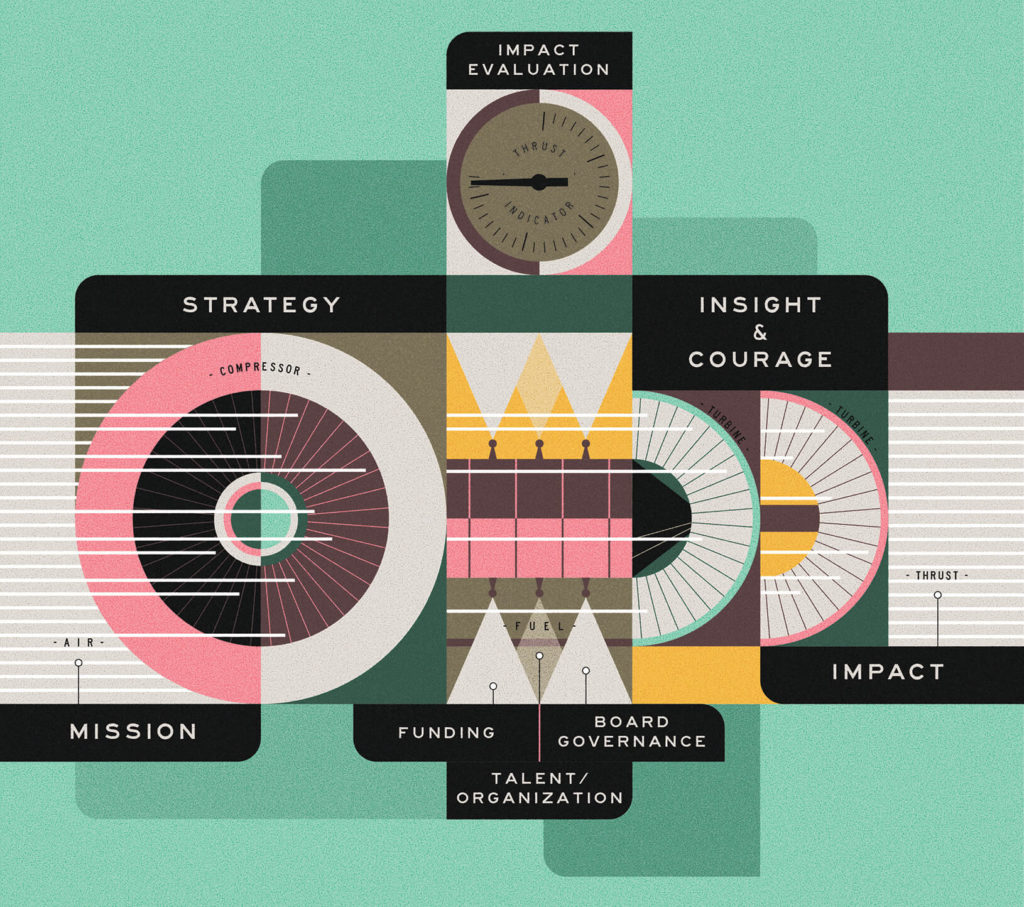 In an article titled “Four Ways Nonprofits Can Increase Their Impact,” Theodore Kinni offers several nuggets of insight from an interview that he conducted with Bill Meehan and Kim Starkey Jonker. The piece appears in the Autumn 2017 issue Stanford Business, a magazine for alumni of Stanford Graduate School of Business, and Kinni quotes an observation by Starkey Jonker on how Engine of Impact is likely to resonate with members of that audience: “Stanford GSB alums are in a wonderful position to have a great deal of impact in the nonprofit sector. They will be familiar with many of the concepts in our book and, as donors and board members, they can make a big difference in the sector, even when they have day jobs outside the sector.”
In an article titled “Four Ways Nonprofits Can Increase Their Impact,” Theodore Kinni offers several nuggets of insight from an interview that he conducted with Bill Meehan and Kim Starkey Jonker. The piece appears in the Autumn 2017 issue Stanford Business, a magazine for alumni of Stanford Graduate School of Business, and Kinni quotes an observation by Starkey Jonker on how Engine of Impact is likely to resonate with members of that audience: “Stanford GSB alums are in a wonderful position to have a great deal of impact in the nonprofit sector. They will be familiar with many of the concepts in our book and, as donors and board members, they can make a big difference in the sector, even when they have day jobs outside the sector.”
The article is available here, at the Stanford GSB website; it’s also available here, as a PDF document. In both formats, the piece contains a brief excerpt from the book that outlines the “engine of impact” model.
Hennessy to Interview Meehan and Starkey Jonker
John Hennessy, former president of Stanford University, will moderate a discussion with Bill Meehan and Kim Starkey Jonker on Thursday, Nov. 9, at an event hosted on the Stanford campus by the Center on Philanthropy and Civil Society (PACS). The event will start with a reception at 5:00 p.m., and a Q&A session led by Hennessy will take place from 5:30 p.m. to 7:00 p.m. Laura Arrillaga-Andreessen, founder and chair of PACS and author of Giving 2.0, will offer a special introduction to lead off the discussion.
 Copies of Engine of Impact will be available for purchase, and Meehan and Starkey Jonker will sign books following the Q&A session.
Copies of Engine of Impact will be available for purchase, and Meehan and Starkey Jonker will sign books following the Q&A session.
The authors of Engine of Impact have close connections to PACS. Meehan is a founding member of the PACS advisory board, and Starkey Jonker was a visiting practitioner at the center.
If you wish to attend the event, click here to register for it. Registered attendees will receive information on the exact location for the event beforehand.
An Excerpt on Strategy
Stanford Social Innovation Review has published an excerpt from Engine of Impact that addresses a vital question for the nonprofit sector: How can a nonprofit apply concepts from business strategy to the way that it structures and plans its work? In the past, some people in the sector have doubted the relevance of such concepts to their efforts. After all, they point out, nonprofits don’t engage in the kind of market competition that sets the conditions for business strategy. But, as Bill Meehan and Kim Jonker demonstrate, effective nonprofit leaders understand that a focus on strategy is essential to achieving significant impact.
 In this excerpt, Meehan and Jonker summarize a landmark concept from the discipline of competitive strategy—the idea of core competencies, which C.K. Prahalad and Gary Hamel set forth in a 1990 article—and then show how that concept applies to one organization, Equal Opportunity Schools. The excerpt illustrates the clarity of insight that nonprofits can achieve by rigorously analyzing what they can do in each part of their value chain.
In this excerpt, Meehan and Jonker summarize a landmark concept from the discipline of competitive strategy—the idea of core competencies, which C.K. Prahalad and Gary Hamel set forth in a 1990 article—and then show how that concept applies to one organization, Equal Opportunity Schools. The excerpt illustrates the clarity of insight that nonprofits can achieve by rigorously analyzing what they can do in each part of their value chain.
You can read the excerpt here.
Subscribe to receive updates on new content
